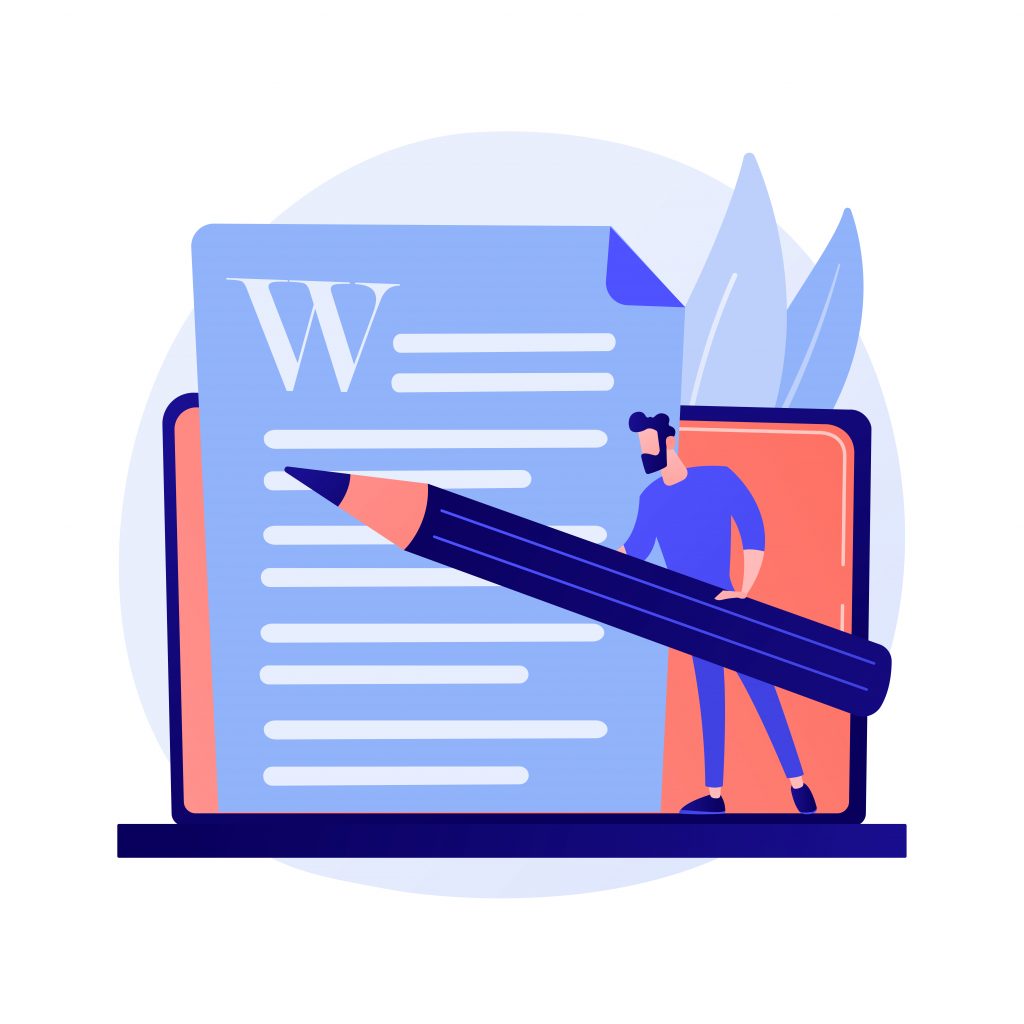Microsoft Word Accessibility
Check Accessibility While You Work in Word
The Accessibility Checker is a tool that reviews your content and flags accessibility issues it comes across. It explains why each issue might be a potential problem for someone with a disability. The Accessibility Checker also suggests how you can resolve the issues that appear.
In Word, the Accessibility Checker runs automatically in the background when you’re creating a document. If the Accessibility Checker detects accessibility issues, you will get a reminder in the status bar.
To manually launch the Accessibility Checker, select Review > Check Accessibility. The Accessibility pane opens, and you can now review and fix accessibility issues. For more info, go to Improve accessibility with the Accessibility Checker and Video: Check the accessibility of your document.

Avoid Using Tables
In general, avoid tables if possible and present the data another way, like paragraphs with headings and banners. Tables with fixed widths might prove difficult to read for people who use Magnifier because such tables force the content to a specific size. This makes the font very small, which forces Magnifier users to scroll horizontally, especially on mobile devices.
If you have to use tables, use the following guidelines to make sure your table is as accessible as possible:
- Avoid fixed-width tables.
- Make sure the tables render properly on all devices, including phones and tablets.
- If you have hyperlinks in your table, edit the link texts, so they make sense and don’t break mid-sentence.
- Make sure the document is easily read with Magnifier. Send the document draft to yourself and view it on a mobile device to make sure people won’t need to horizontally scroll the document on a phone, for example.
Use Table Headers
Screen readers keep track of their location in a table by counting table cells. If a table is nested within another table or if a cell is merged or split, the screen reader loses count and can’t provide helpful information about the table after that point. Blank cells in a table could also mislead someone using a screen reader into thinking that there is nothing more in the table. Use a simple table structure for data only and specify column header information. Screen readers also use header information to identify rows and columns.
For step-by-step instructions on how to add a header row to a table, go to Create accessible tables in Word.
To ensure that tables don’t contain split cells, merged cells, or nested tables, use the Accessibility Checker.
Use Built-in Headings and Styles
Headings are meant to be scanned, both visually and with assistive technology. Ideally, headings explain what a document section is about. Use the built-in heading styles and create descriptive heading texts to make it easier for screen reader users to determine the structure of the document and navigate the headings.
Organize headings in the prescribed logical order and do not skip heading levels. For example, use Heading 1, Heading 2, and then Heading 3, rather than Heading 3, Heading 1, and then Heading 2. Organize the information in your document into small chunks. Ideally, each heading would include only a few paragraphs.
Create Paragraph Banners
In addition to using headings to organize the content in your document, you can also create paragraph banners. In a paragraph banner, the background color block extends across the width of the document and highlights the text within the banner. This is a great alternative to tables to organize and separate content.
Add Alt Text To Visuals
Alt text helps people who can’t see the screen to understand what’s important in visual content. Visual content includes pictures, SmartArt graphics, shapes, groups, charts, embedded objects, ink, and videos. In alt text, briefly describe the image and mention its intent. Screen readers read the text to describe the image to users who can’t see the image.
Avoid using text in images as the sole method of conveying important information. If you must use an image with text in it, repeat that text in the document. In alt text, briefly describe the image and mention the existence of the text and its intent.
Tip: To write a good alt text, make sure to convey the content and the purpose of the image concisely and unambiguously. The alt text shouldn’t be longer than a short sentence or two—most of the time a few thoughtfully selected words will do. Do not repeat the surrounding textual content as alt text or use phrases referring to images, such as, “a graphic of” or “an image of.” For more info on how to write alt text, go to Everything you need to know to write effective alt text.
To find missing alt text, use the Accessibility Checker.
Add Accessible Hyperlink Text and ScreenTips
People who use screen readers sometimes scan a list of links. Links should convey clear and accurate information about the destination. For example, avoid using link texts such as “Click here,” “See this page,” Go here,” or “Learn more.” Instead include the full title of the destination page. You can also add ScreenTips that appear when your cursor hovers over text or images that include a hyperlink.
Use Accessible Font Format and Color
Here are some ideas to consider:
- To reduce the reading load, select familiar sans serif fonts such as Arial or Calibri. Avoid using all capital letters and excessive italics or underlines.
- A person with a vision disability might miss out on the meaning conveyed by particular colors. For example, add an underline to color-coded hyperlink text so that people who are colorblind know that the text is linked even if they can’t see the color.
- For headings, consider adding bold or using a larger font.
- Add shapes if color is used to indicate status. For example, add a checkmark symbol
Use Accessible Font Color
The text in your document should be readable in a high-contrast mode. For example, use bright colors or high-contrast color schemes on opposite ends of the color spectrum. White and black schemes make it easier for people who are colorblind to distinguish text and shapes.
Here are some ideas to consider:
- Use the Accessibility Checker to analyze the document and find insufficient color contrast. The tool now checks the documents for text color against page color, table cell backgrounds, highlight, textbox fill color, paragraph shading, shape, SmartArt fills, headers and footers, and links.
- Use the https://webaim.org/resources/contrastchecker/
Create Accessible Lists
To make it easier for screen readers to read your document, organize the information in your document into small chunks such as bulleted or numbered lists.
Design lists so that you do not need to add a plain paragraph without a bullet or number to the middle of a list. If your list is broken up into a plain paragraph, some screen readers might announce the number of list items wrong. Also, the user might hear in the middle of the list that they are leaving the list.

